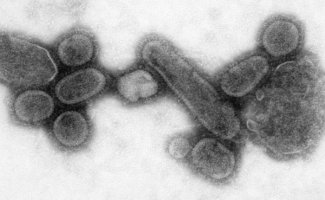Home › Health › Do air purifiers remove viruses?
Do Air Purifiers Really Remove Viruses?
Can Viruses Be Filtered By Air Purifiers?
Because viruses are so small, some less than .03 microns, most air purifiers cannot capture them effectively, although most claim to in their promotional material. Air purification systems that use a combination of HEPA filters, ultraviolet lights and electrostatic filters may achieve the best results since none alone can guarantee consistent removal and eradication of viruses from the air stream.
EPA studies have found that the effectiveness of hybrid units can be limited if airflow is not properly configured which can cause increased air resistance that could allow the air to bypass the cleaning mechanisms. Correct placement of portable residential air cleaners is also considered crucial to capturing airborne viruses.
HEPA Filters
HEPA filters have been used in biomedical applications since the 1940s to prevent the spread of airborne bacteria and viral organisms. Specific requirements for different types of HEPA classifications range from cleanroom quality to true HEPA filters to HEPA-like filters. True HEPA filters are available for the residential market and they are regulated by the United States Department of Energy (DOE) to be 99.997% efficient, allowing no more than 3 particles in 10,000 to penetrate the filter. Even the best HEPA filter will not kill viruses, however, and can lose its effectiveness at trapping viruses as the particulate matter builds up and causes more resistance to the airflow.
Air purifier manufacturer IQ Air has claimed to develop a HyperHEPA (IQ Air's trademarked name for this technology) filter capable of removing particles down to .003 microns in size with 99.5% efficiency. This is 100 times more effective than sta IQ Air backs up its claims by measuring each shipped air purifier with a laser particle counter. Conceivably, these IQ Air models could be the most effective units on the market in filtering viruses. Even though these purifiers are used in some hospitals and clean rooms, according to the EPA there is no standardized test available to measure the effectiveness of virus filtration.
Ultraviolet Germicidal Irradiation (UVGI)
Health care professionals use ultraviolet lights to neutralize airborne microorganisms like germs, bacteria or viruses, although some mold and bacteria spores are resistant to UV radiation. For residential applications, however, the EPA warns that there is no standard to measure the effectiveness of UV cleaners and portable units and they probably have a limited effectiveness in combating viruses.
For UV lights to be most effective they need to be exposed to the air flow longer than most residential units allow. Therefore, the most effective air purifier designs direct the UV lamp onto the HEPA filter so the particles trapped by the filter are treated by the UV lamp for a sufficient period of time to destroy the viruses.
Electrostatic Precipitators
This method of air purification uses opposing charges to cause particulates to stick together and fall out of the air and land on a collection plate. Filters capture very fine particulates, including viruses, but it does not kill them. According to EPA studies, efficiency declines rapidly as the collection plates become covered with debris and must be changed often if they are the sole air purification method. When combined with a HEPA filter and UV lamps, however, electrostatic units maintain their effectiveness much longer.
Photocatalytic Oxidation (PCO)
PCO cleaners uses hydroxyl radicals to remove gaseous pollutants but does not remove particulates. The EPA cautions that PCO cleaners' effectiveness in residential settings is limited, and testing has produced inconclusive evidence of their effectiveness against volatile organic compounds (VOC). In fact, some PCO devices were found to produce new indoor air pollutants while failing to destroy existing pollutants.
Ozone Generators
According to the EPA, ozone generators can be a threat to public health despite claims they neutralize odors and irritants in the air. Although studies have proven that ozone removes certain biological contaminants from the air, data suggest that the resulting concentration of ozone would exceed acceptable standards, up to 5 to 10 times higher than recommended. Air purifiers that emit small amounts of ozone -- .01 to .02 or less -- are safe and do assist in removing viruses from the air stream.
Conclusion
- The EPA's August 2009 report on air cleaner effectiveness indicates that standards are needed to guide tests in determining the effectiveness of air purifiers on virus removal. Currently, no standard exists.
- Bottom line - Inconclusive. HEPA filters may be able to capture some viruses and prolonged ultraviolet light may be able to kill viruses but with the lack of testing standards, effectiveness is currently unable to be determined.
Source information:
- EPAL Air Cleaner Guide - #
- EPA: Residential Air - #
- EPA: Ozone Generators - http://www.epa.gov/iaq/pubs/ozonegen.html
- IQ Air: HealthProPlus - #
- Wikipedia: HEPA Filters - #



